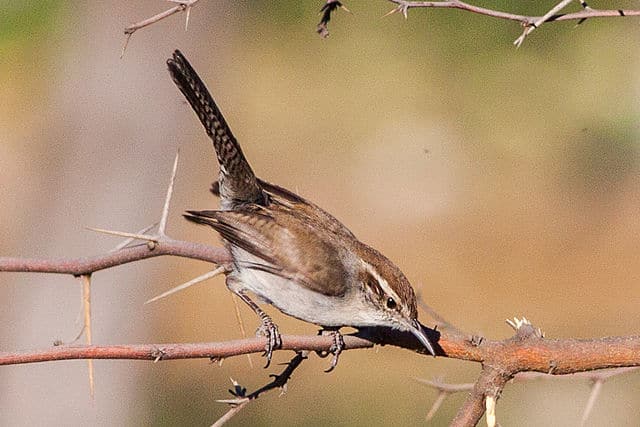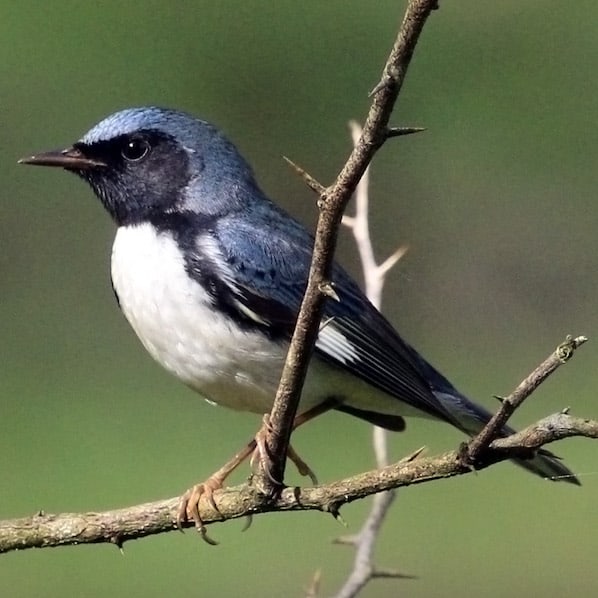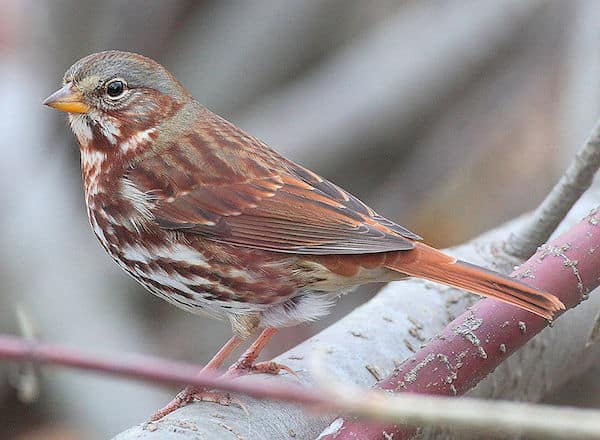Look For
A medium-sized wren, plain brown above, pale gray below with a bold white eyebrow line. The long gray-brown tail is rounded at the tip with white corners. While perched, the Bewick’s wren often fans and switches its tail. The white corners on the tail are diagnostic. The similar Carolina wren is warmer brown overall with an all-brown tail.
Listen For
The Bewick’s wren is very vocal. Its song is similar to a song sparrow’s: a few high notes, a lower trill, rising buzzes, and ending on a trill. Calls include harsh scolding notes, pit-pit, and a dry buzz: dzzzrrrt.
Find It
This bird is common in the West in scrublands, woodland and riparian thickets, chaparral, and in towns, parks, and backyards with thick underbrush. Declining steeply in eastern parts of range.
Feeding Behavior
Bewick’s wren eats mostly insects such as butterflies, moths, caterpillars, beetles, and flies. Seeds and fruits are also in their diet, most often in winter. It is not uncommon for this wren to swallow mud and pebbles to help with digestion and to provide nutrients. To forage from the twigs and bark from trees, this bird sometimes even hangs upside down.
Nesting Behavior
While both female and male build the nest together, the male begins the nest-building process. The outer cup is made of sturdier plant material like grasses, sticks, and moss while the inner layer is lined with softer materials like hair, feathers, and plant down. A final layer might be added with snakeskin. The nest is built higher up—about 30 feet from the ground—on ledges and crevices.
Wow!
The Bewick’s wren is not named for the Buick (though it’s pronounced the same). It was named by John James Audubon to honor his friend and fellow artist Thomas Bewick (who lived way before there were any Buicks).




